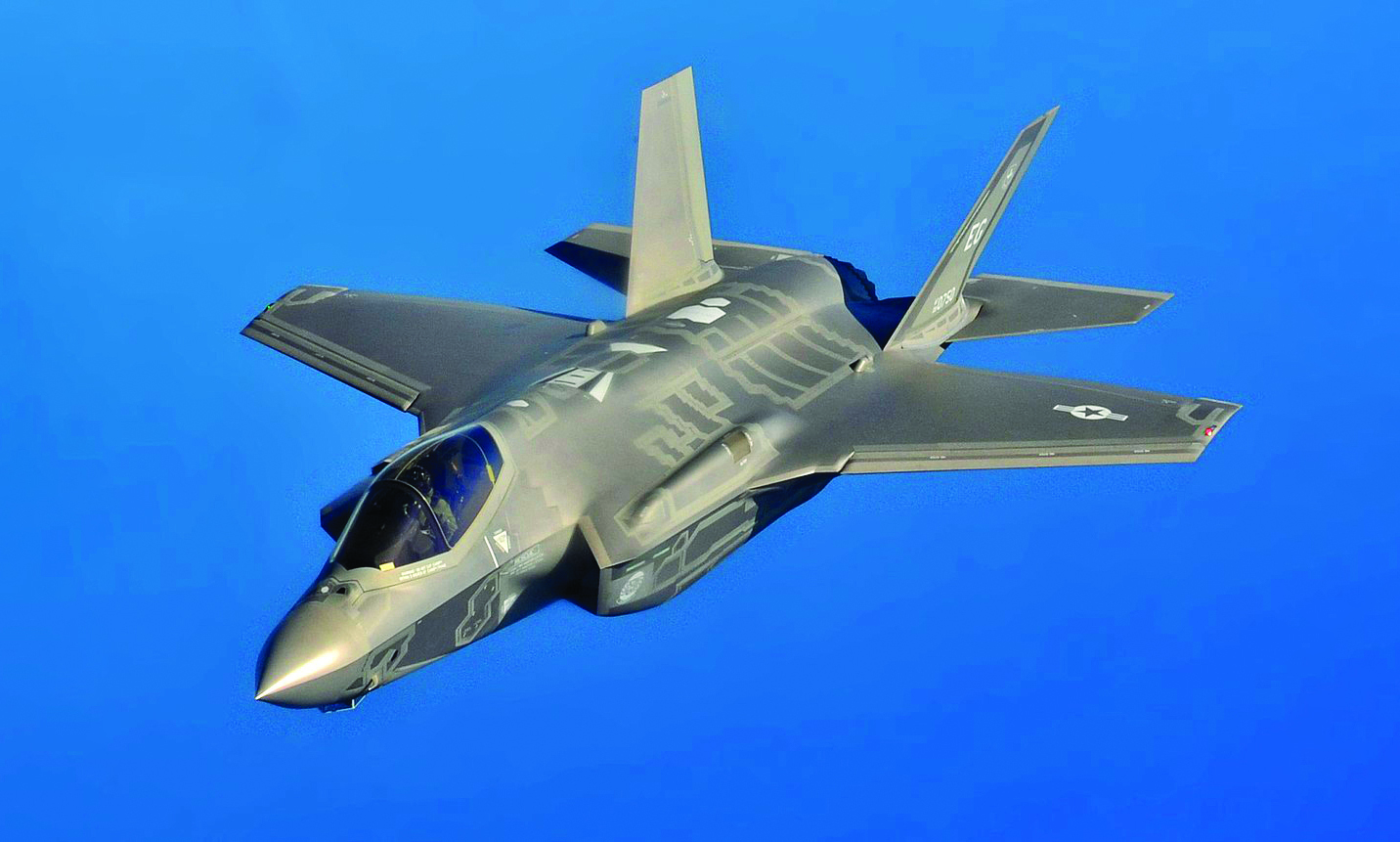The rapid advancement of artificial intelligence (AI) has extended far beyond commercial applications, entering the domain of military affairs with increasing momentum. In recent years, major American and Israeli AI companies have secured substantial contracts with their respective defence establishments, raising profound ethical, legal, and security concerns. In early 2025, Alphabet—the parent company of Google—reversed its previous commitment not to employ AI for defence and security purposes, opening the door to the development of autonomous weapon systems and surveillance tools. This shift has sparked debate on whether civilian data, collected globally for commercial AI training, may now be repurposed for espionage or military operations, thus risking violations of privacy and human rights.

This analysis examines the historical roots of collaboration between technology companies and the U.S. Department of Defense, the various forms such partnerships have taken, the motivations driving them, and the implications for global security and civil liberties, as well as war crimes, particularly if AI applications lead to an increase in civilian casualties rather than reducing them.
Military Roots of Silicon Valley
The origins of Silicon Valley are deeply intertwined with the U.S. Department of Defense. During the 1950s, in the midst of the Cold War, Washington heavily invested in emerging tech firms to counter Soviet scientific and technological advances. Santa Clara County—later dubbed “Silicon Valley” in 1971—played a critical role in developing cutting-edge military innovations, including radar, the internet, intercontinental ballistic missiles, reconnaissance satellites, and microelectronics.
Advanced fighter aircraft such as the F-16 would not have been operational without transistors, integrated circuits, and microprocessors designed in Silicon Valley. These components enabled real-time data processing, seamless communications, and precision-guided munitions. By the Reagan era, the county was reaping nearly $5 billion annually in defence contracts, ranking third nationally among Pentagon contractors. By the end of the Cold War, nine of its largest firms reported over $11 billion in defence-related revenues, with AMD emerging as one of the Pentagon’s top semiconductor suppliers.
Partnerships in Multiple Forms
Agencies such as the Federal Bureau of Investigation (FBI), the Federal Bureau of Prisons, U.S. Immigration and Customs Enforcement (ICE), the Department of Defense (DoD), and the Drug Enforcement Administration (DEA) maintain thousands of contracts with Amazon, Dell, Facebook, Google, HP, and IBM. Since 2016, Microsoft alone has signed more than 5,000 subcontracts with the Department of Defence. Amazon and Google follow, with around 350 and 250 contracts respectively.
One illustrative example of cooperation between defence agencies and technology firms is the role of the Defense Advanced Research Projects Agency (DARPA), alongside other U.S. intelligence agencies, in funding Stanford graduate students Sergey Brin and Larry Page in 1998 to establish Google. This example highlights how Washington directly financed the creation of Silicon Valley companies.
At the time, the CIA and NSA hoped that the country’s leading computer scientists could use unclassified information and user data, combining them with what would become the internet, to launch profitable commercial ventures that also served the needs of both business and intelligence communities. This initiative—known as the Massive Digital Data Systems (MDDS) project—aimed to lay the foundation for a comprehensive mass-surveillance system bridging the public and private sectors, enabling new ways to track individuals and groups online.
The MDDS project was presented to dozens of leading computer scientists at universities including Stanford, CalTech, MIT, Carnegie Mellon, Harvard, and others, through a “white paper” detailing what the CIA, NSA, DARPA, and related agencies hoped to achieve. Funding and management were to be channeled primarily through non-classified scientific bodies such as the National Science Foundation (NSF), creating the potential to expand the project into the private sector if it succeeded. Against this backdrop, accusations later emerged that Google had effectively created a “backdoor” for U.S. intelligence agencies to access its systems and user data—especially after Edward Snowden’s 2013 revelations that the NSA had breached Google’s user databases.
A second form of cooperation emerged through the direct creation of tech companies by intelligence agencies, later spun off into the Silicon Valley ecosystem. For example, the CIA established its own venture capital arm in Silicon Valley, In-Q-Tel, which funded a nominally private company, Keyhole Corporation. Keyhole developed the mapping technology that became Google Earth, enabling users to zoom down to street level with layered data on roads, bridges, nuclear sites, schools, businesses, and more. In-Q-Tel later sold Keyhole to Google, which launched Google Earth after the acquisition. More recently, Google negotiated an agreement with GeoEye Corporation for exclusive access to imagery from its $502 million satellite, co-funded by the National Geospatial-Intelligence Agency (NGA) and the National Reconnaissance Office (NRO). These arrangements highlight the depth of the ties between U.S. defence and intelligence agencies on one side and technology firms on the other.
A third dimension of the relationship has been joint investment. In one case, In-Q-Tel and Google Ventures—Google’s investment arm—each invested just under $10 million in Recorded Future, a company whose technology monitors the internet in real time to predict future events. Google leveraged this capability to improve its data-gathering and indexing for advertising and consumer use, while intelligence agencies used it to enhance open-source intelligence (OSINT). This marked the first known instance where Google and an intelligence-linked entity invested in the same company simultaneously, at least publicly.
Beyond providing military-support systems, technology companies have also entered direct military partnerships. Meta, the parent company of Facebook, partnered with U.S. defence startup Anduril to develop advanced augmented reality and AI systems as part of a $22 billion Pentagon program. The initiative aims to enhance the combat and tactical capabilities of U.S. soldiers through wearable smart devices. Meta is responsible for advanced AI-driven software, while Anduril designs the hardware, including extended-reality helmets and goggles that enable soldiers to detect drones at long range, identify concealed targets in complex battlefields, and operate advanced autonomous weapons systems.
In December 2024, OpenAI also entered a partnership with Anduril to integrate its AI technology into the company’s counter-drone defence systems—its most significant step into the defence sector to date. Anduril will rely on OpenAI’s systems to boost its ability to detect “aerial threats” from drones, which have become central to modern warfare. At the same time, OpenAI intends to use Anduril’s data to further train its AI software for these defence applications.

Motives for Growing Partnerships
One of the key drivers behind the United States’ expanding reliance on technology companies specializing in artificial intelligence is its increasing focus on developing a variety of weapons systems that incorporate AI. A prime example is the F-35 fifth-generation stealth fighter. While the integration of electronics, sensors, and onboard communication systems into modern fighter jets is not new, the F-35 was also designed with a single seat in the cockpit. This means that the role traditionally assigned to a co-pilot is instead carried out by AI algorithms, which take on several tasks usually performed by a human operator.
Among these tasks is the fusion of disparate streams of intelligence from multiple sensors and other sources to create comprehensive situational awareness for the pilot. This ability of software algorithms to integrate data across multiple channels is known as sensor fusion.
AI has already been successfully tested as a co-pilot on the U-2, one of the oldest aircraft in the U.S. Air Force. In this experiment, the AI handled tactical navigation and the operation of sensors, while the human pilot was able to focus on flying the aircraft, authorizing weapons deployment, approving adjustments to flight plans, and communicating with other personnel. In effect, one of the oldest bombers became one of the first to employ AI, illustrating that AI can be retrofitted onto even legacy aircraft.
AI is also being employed to create new forms of human–machine teaming. For example, the F-35 can be accompanied by an autonomous drone known as the Loyal Wingman, such as the XQ-58A Valkyrie. Here, AI enables the F-35 to control the drone, which extends the jet’s sensor reach and combat engagement range. The drone’s missions may include scouting ahead to detect hostile radar, probing and confusing enemy air defences, drawing enemy fire away from the fighter, scanning the skies for threats, relaying targeting data to manned aircraft, conducting intelligence, surveillance, and reconnaissance (ISR) missions, and even carrying additional weapons. The Valkyrie itself is equipped with AI technologies.
This illustrates why defence companies worldwide are eager to forge partnerships with technology firms, particularly those in the AI sector. These companies possess advanced technologies that can help develop the systems modern militaries increasingly rely on, especially as unmanned weapons platforms grow more central to warfare.
At the same time, it is becoming evident that a new arms race is underway among the world’s major powers—one that now extends into the field of integrating AI into weapons systems. For instance, Russia is developing its fifth-generation fighter jets to operate with AI and to be networked with unmanned aerial vehicles. In 2018, a source in Russia’s aerospace industry confirmed that the Su-57 would be fitted with AI software that includes an automated command system and targeting mechanisms, effectively embedding an AI “co-pilot” to support the pilot during routine flights as well as in combat scenarios. Russia also plans to pair the Su-57 with the S-70 Okhotnik unmanned combat drone, envisioned as a wingman designed to enhance the capabilities of manned aircraft.
In this intensifying competition, the United States seeks to secure the lead through its broad partnerships with major technology firms.
Ethical and Human Rights Concerns
There are growing fears that the expanding cooperation between AI companies and security or defence agencies could have far-reaching implications for human rights. These include the erosion of personal privacy, the potential for war crimes if AI is involved in lethal decision-making on the battlefield, and the possibility that AI firms could influence electoral processes. These concerns can be outlined as follows:
1. Violations of Individual Privacy
As noted earlier, there was a preliminary agreement between the U.S. government and Google to develop mechanisms enabling the monitoring of online interactions for both security and commercial purposes.
China is often accused of employing AI to conduct large-scale surveillance, combining facial recognition, social media monitoring, and camera networks to track dissidents and government critics in real time. A functioning infrastructure already exists, capable of integrating and analyzing vast amounts of data for state agencies.
Western democracies have also faced similar accusations. Reports revealed that the U.S. Department of Homeland Security monitors social media under contracts with private firms, which advertise their ability to scan millions of posts and use AI to generate summaries for government clients. The Department has acknowledged using such digital tools to analyze applicants for visas or permanent residency, searching for indicators of “extremist speech” or “antisemitic activity.” This has raised questions about how such terms are defined and whether open criticism of certain states could be misclassified as “terrorist sympathies.”
Despite widespread public awareness of U.S. mass surveillance practices, no decisive legal reforms have curtailed them. Many Western thinkers now argue that the perceived divide between democracies and their rivals regarding surveillance is an illusion: under the banner of national security, Western governments also continue to impose broad restrictions on civil liberties.
2. Involvement in War Crimes
U.S. technology companies have entered into joint projects with the Israeli government to provide cloud computing and AI applications. One such project is “Project Nimbus”, which the Israeli government describes as a multi-year flagship initiative—the first of its kind within Israel’s public sector. It is led by the Accountant General of the Ministry of Finance through the Government Procurement Administration, in collaboration with the Israel National Digital Agency, the Israel National Cyber Directorate, the Ministry of Defence, the Israel Defense Forces (IDF), and other governmental partners. In other words, the project is military in nature.
Despite this, Amazon and Google, the project’s two main contractors, claimed it was purely a civilian undertaking. However, an investigation by the U.S. technology magazine Wired revealed that the IDF had been a central actor in Project Nimbus from the very beginning—shaping its design and becoming one of its primary users.
As part of this initiative, Google provides AI and machine-learning technologies that enhance the Israeli military’s capabilities in facial recognition, automated image classification, and even sentiment analysis of photos, speech, and writing. These tools significantly increase the army’s ability to conduct strict surveillance of Palestinians.
Even before the controversial Nimbus contract was signed, Google was aware it could not control how Israel and its military would use advanced cloud technologies, according to a leaked internal report obtained by The Intercept. The report indicated not only that Google would be unable to monitor or prevent Israel from using its software to harm Palestinians, but also that the contract could obligate the company to obstruct foreign criminal investigations into Israel’s use of Google technologies—a stipulation unprecedented in Google’s other government contracts. The question of legal liability has become especially pressing as Israel enters the third year of what is widely regarded in Western media outlets as a genocide in Gaza, with shareholders pressuring Google to investigate whether its technologies are enabling human-rights violations.
There is mounting evidence that Israel has deployed AI tools developed by Microsoft, Google, and Meta in its military operations against Gaza. For instance, Israel integrated AI into facial recognition systems to identify partially disfigured or injured individuals and to select targets for airstrikes. It also developed an Arabic-language large language model to power a chatbot capable of analyzing text messages, social-media posts, and other data.
Reservists working at companies such as Google, Microsoft, and Meta also contributed to these initiatives in collaboration with Israel’s elite intelligence Unit 8200, in what became known as “the Studio”—an innovation hub for developing AI projects.
Reports further suggested that Microsoft AI models, as well as GPT-4 developed by OpenAI, were used within an Israeli military program to select bombing targets during the war on Gaza. The use of these tools at times resulted in misidentifications and wrongful detentions, as well as civilian casualties, according to Israeli and U.S. officials. This raised profound ethical questions about the role of such technologies and the accountability of the companies that produce them.
Investigative reporting in Western outlets, drawing on sources inside Unit 8200, revealed that the unit had used Microsoft’s Azure platform to store recordings of millions of phone calls made daily in Gaza and the West Bank. Intelligence derived from this vast archive—hosted on the cloud—was then used to identify targets for airstrikes in Gaza. Notably, Microsoft employees in Israel who managed the relationship with Unit 8200 were themselves veterans or reservists of the unit. According to leaked files obtained by The Guardian, Microsoft, including senior executives, was aware that Unit 8200 intended to transfer massive amounts of sensitive intelligence data to Azure. By July 2025, the volume of data stored on Azure cloud servers exceeded 11,000 terabytes, the equivalent of 200 million hours of audio recordings.
Through Azure and similar AI applications, Israel reportedly monitored calls made by Ibrahim Biari, a senior Hamas commander in northern Gaza. His voice was identified using AI, which also provided an estimated location during the calls. On October 31, 2023, Israel launched airstrikes that killed Biari but also caused the deaths of more than 125 civilians. This incident has been cited by critics as evidence of Israel’s disregard for civilian casualties and a violation of the principle of proportionality, which requires limiting harm to civilian populations and infrastructure during military operations.
AI was not only misused to carry out indiscriminate killings of Palestinians but also deployed to suppress documentation of war crimes against them. During the ongoing war in Gaza, for example, Meta systematically discriminated against Palestinians by removing their content—even when it documented war crimes committed against them—while reducing the visibility of their posts and accounts through a practice known as “shadow-banning.” At the same time, Meta violated its own policies by permitting content that incited violence and promoted hate speech against Palestinians on its platforms.
3. Influence on Voter Behaviour
Much has been written about how foreign actors use social media to influence voter preferences. However, the 2022 U.S. elections revealed another dimension—namely, the involvement of domestic technology companies in promoting certain candidates.
A notable example was the decision by Google and Facebook to restrict the circulation of news surrounding the scandal of Hunter Biden’s laptop, the son of President Joe Biden, in the run-up to the 2020 elections. The move was aimed at preventing the story from undermining Biden’s electoral chances. Biden’s campaign even falsely claimed that the incident was part of a Russian disinformation effort, despite the authenticity of the laptop and its files, which implicated Hunter in corruption-related cases.
Mark Zuckerberg, the founder of Facebook, later admitted that he received a request from the FBI to limit the spread of the story on his platform on the grounds that it was part of a disinformation campaign. This request came shortly before The New York Post broke the story in October 2020. Notably, the FBI had been in possession of Hunter’s laptop since December 2019, meaning the bureau knowingly dismissed a true story and pressured Facebook, which complied. This has fueled allegations that Facebook—and Google—are sympathetic to the Democratic Party.
Research has also shown that Google sent get-out-the-vote alerts to liberal users during the 2020 Senate runoffs in Georgia, likely boosting voter turnout among Democrats. Facebook has employed similar targeted voting alerts since at least 2008. One study found that such alerts increased total voter turnout by 340,000 ballots in 2010.
These findings suggest that technology companies now have the power to shift millions of votes toward candidates favored by Silicon Valley—a form of unlawful interference in the electoral process.
Conclusion
This analysis highlights how the United States is actively developing a range of AI-powered weapons systems and seeks to secure a leading position through extensive partnerships with the private sector in Silicon Valley, which has long supported U.S. military projects dating back to the Cold War. These efforts gain added importance in light of similar programs pursued by other major powers—most notably Russia—in developing AI-driven combat systems. At the same time, because AI companies now possess the ability to store and analyze vast amounts of data and share it with the U.S. government, there are growing concerns that such practices may undermine civil rights and individual freedoms. Moreover, the integration of AI into combat operations risks enabling serious human-rights violations, as illustrated by the ongoing Israeli war in Gaza.
By: Dr Shadi Abdulwahab Mansour
(Associate Professor at the National Defence College)














